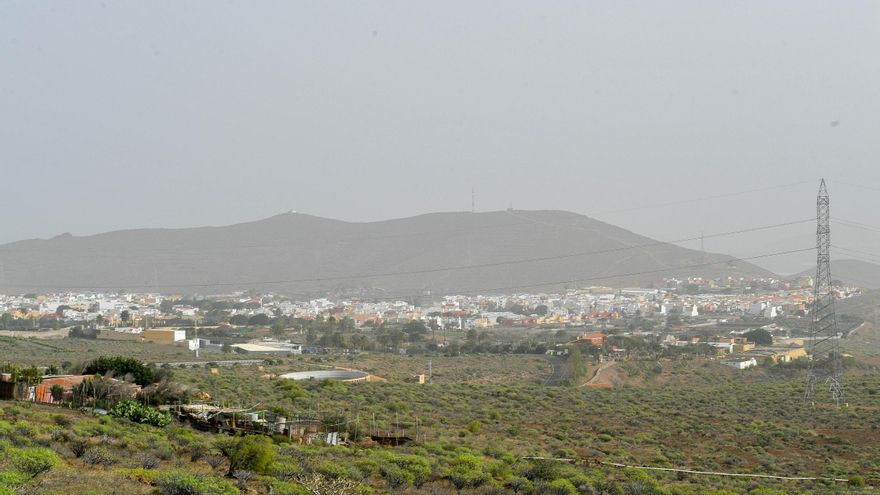
After a brief winter respite, the high temperatures will make an appearance again in Spain this week, in an unprecedented heat wave that will raise thermometers up to 11 degrees above usual in some areas of the center of the peninsula.
However, the position of the anticyclone that will cause this unusual episode – in the center of the peninsula itself – will help to Canary Islands escape to the increase in temperatures that will cause a spring situation throughout Europe. What the Archipelago will not be able to do is escape from the haze, which has already begun to color the skies of the Islands and which will become the protagonist of the week.
The Canary Islands will be one of the few European regions that will not suffer this episode of sultry heat but, in return, strong gusts of wind will intensify, turning the skies ocher. The wind forecast has forced the State Meteorological Agency (Aemet) to activate the yellow warning in Lanzarote, Fuerteventura, Gran Canariathe north and metropolitan area of Tenerife, La Gomera and The iron.
It will be this last island that will suffer the greatest difficulties during the week and especially this Wednesday, since the wind gusts could reach speeds of up to 90 kilometers per hour, which will mean that on this island the wind warning reaches orange for a few hours on January 24.
Temperatures unchanged
Temperatures will remain with few changes, a maximum of 25 degrees for the south of the Islands and the coasts of the Islands, and 16 degrees in the midlands. “The weather will be drier so the thermal sensation could vary,” summarizes David Suárez, Aemet delegate in the Canary Islands. As he insists, the fact that the thermometers in the Canary Islands are not going to vary also has to do with the fact that “we have had an anomalous month of January”, as far as temperatures are concerned.
The entry of haze, for its part, although it will not be as intense as in extraordinary periods – such as the super haze of 2020 – will generate a reduction in visibility at airports and a significant increase in the concentrations of particles of less than 10 microns ( PM10). “On average we will be above 50 micrograms per cubic meter,” argues Suárez.
Recommendations for the haze
The Ministry of Health of the Government of the Canary Islandsthrough the General Directorate of Public Health, and given the forecast of the presence of haze on several islands for the next few days, has recommended taking certain precautions such as avoiding prolonged exposure to outside air, keeping the windows closed and not doing physical exertion. outdoor.
Suspended dust contributes to drying out the respiratory tract and, in many cases, can cause a worsening of conditions or symptoms related to respiratory diseases, such as asthma, people with chronic obstructive disease (COPD), which leads to increased visits to emergency services and hospital admissions in some cases.
Exposure to this contaminant can cause chest discomfort, cough, palpitations, fatigue or increased susceptibility to respiratory infections, at least for five days after the start of the episode.
















